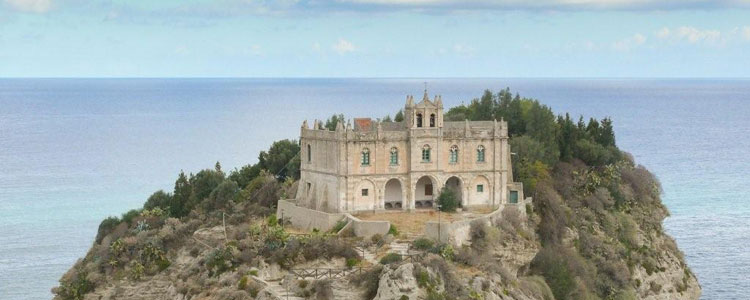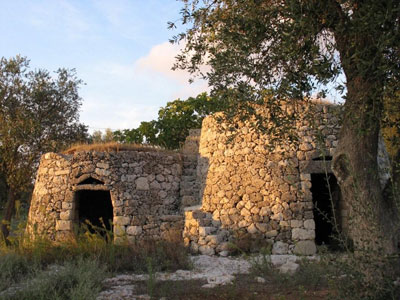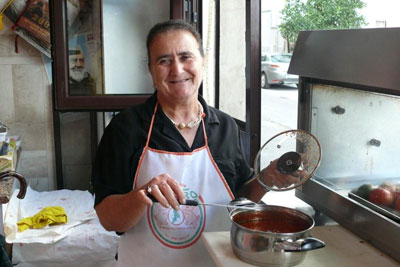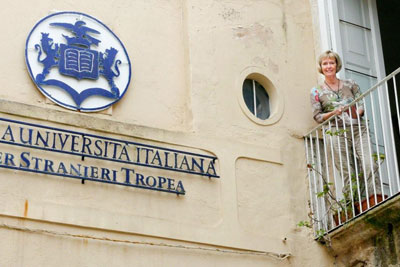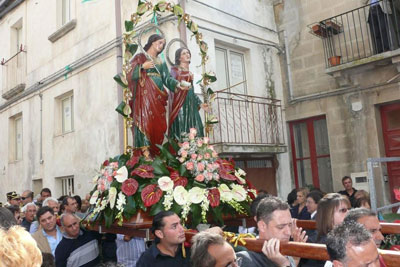A quest for learning – embracing the culture and language of Italy
by Carolyn Koestenblatt, Ft. Meyers, FL
When I retired a decade ago, I made a “to do” list for the rest of my life. Near the top was the phrase “learn a foreign language fluently.”
Though I had studied both French and Spanish in school, I decided to focus on Italian, since it brought back memories of my childhood when my paternal grandparents would speak to each other in Italian, occasionally arguing about the correct pronunciation of certain words (my grandmother’s relatives were from Genoa and my grandfather came from Naples).
I started my Italian lessons at a nearby community college and rediscovered immediately the joy of the learning process. After several years of my intermittent study, my cousin Joanne’s son overheard a conversation between his mother and me about our mutual desire to improve our Italian. As a gift to his mother, he decided to give her Italian lessons in Italy. And so the passion of a lifetime began.
Diving in
Joanne and I researched through the Internet different schools and locations in Italy. For this first trip, in 2003, we decided on Centro Fiorenza (phone +39 055 2398274) in Florence. Well located just across the Arno from the historic center of Florence, it offered courses in Italian at all levels.
We learned that the school would arrange housing, so we selected to live with an Italian family and have breakfast and a light supper included, assuming we would have our main meal midday in a restaurant.
The lodgings consisted of separate rooms in a single woman’s apartment, located on the outskirts of the city. As luck would have it, it was the summer of the European heat wave, so the first new word we learned was “ventilatori,” meaning “fans,” which we purchased immediately after our arrival.
For four weeks we attended classes for four hours a day, Monday through Friday. Half the time was spent on grammar instruction and the rest on conversation. Our free time was occupied with visits to cathedrals, gardens and museums.
Current class prices start at €200 ($274) for a one-week basic intensive course. A four-week course costs €628 ($859) per person.
At the beginning of this sojourn, Joanne and I planned the various places we wanted to explore and, incredibly, it took the four weeks to see everything, given the abundance of extraordinary venues in Florence.
On the weekends we traveled out of the city by bus or train. One day we stood at a railing on the main piazza of Siena waiting eight hours in the blistering sun to view the five-minute horse race known as the Palio, but we both agreed it had been well worth it since we would hold the images of the waving flags, thundering horses and roaring crowd forever in our minds.
Another Saturday, we took a bus to a small, upscale seaside town, Forte dei Marmi, where we rented cabanas and sipped long, cool drinks at the water’s edge.
At the end of this Italian adventure I knew that studying this beautiful language would be a lifelong endeavor. I continued classes at home, but within several years I longed to return to Italy for more schooling.
Back for more
Over the years, my husband and I have visited Sicily, the Amalfi Coast, Tuscany, the Lake District and Venice. Therefore, I wanted to see another part of Italy. For 2007, once again I used the Internet to assess my options.
I located a small language school, Porta d’Oriente (phone +39 338 4562722), in the seaside town of Otranto in Pulia. It looked ideal. This time I would be going by myself for three weeks.
The school itself was small but had the added advantage that the owner/manager was a young woman who delighted in sharing the history and culture of this region with her students. Frequently, she personally guided our group on local expeditions.
We were taken to towns where the signage was still in Greek, attesting to the ancient confluence of the Greek and Italian cultures in that area.
We visited the trulli (small huts) in which farmers and their animals lived until the mid-20th century, and we saw the ramparts along the coast, reminding us of Italy’s involvement in the Second World War.
The town of Otranto is a picturesque resort town on the Adriatic Coast, but it is visited primarily by Italians, not Americans. For someone studying the local language, this fact is of great importance.
It is disconcerting to speak to a local person in Italian who then responds to you in English. In Otranto, very few people understand English, so that was never an issue.
The class itself was nothing short of delightful. While my fellow students in Florence had generally been young professionals eager to learn another language to further their respective careers, the majority of my classmates in Otranto were mature women much like myself, stretching their minds for their own pleasure.
The class, including women from the Netherlands, England, Switzerland, Canada, South America and the US (me), bonded from the very beginning. By the time I left Otranto, I once again realized that, for me, the study of Italian was truly a journey and I would forever enjoy the adventures along the way.
The current cost for a one-week intensive language and culture course (20 lessons per week) is €230 ($315) per person.
One more time
In 2009 I decided to explore yet another school and a different area in Italy. Having had such a wonderful time in Pulia, which is commonly referred to as the “heel of the boot,” it seemed only natural to select another southern resort town. This time I decided on Calabria, located at the toe of the boot. A high school friend who had also been studying Italian decided to join me.
The school, Piccola Università Italiana (phone +39 0963 60 32 84, www.piccolauniversitaitaliana.com), arranged for accommodations in a spacious, two-bedroom, two-bathroom apartment a stone’s throw away. This school was quite large, with perhaps 50 students at a time, almost all of whom spoke German, having come from Germany, Austria or Switzerland.
For most of the three weeks we were there, my friend Camille and I were the only native English-speaking people in the school. In class, that made no difference because Italian was the only language allowed to be spoken.
The classes were divided between conversation and grammar, like the others I had taken, but we had different teachers from one class to the other and from one week to the next.
My three-week class cost €505 ($690) and my share of the apartment, €429.
Beyond class
Since Camille is an excellent cook and the poor dollar-to-euro exchange rate made dining out fairly expensive, we often had our main meal at the apartment. This had the added advantage of our becoming familiar with a number of local merchants.
Signora Mattorella, who owned the macelleria (butcher’s shop), prepared her own Calabrese pasta sauce just for us, and Caterina, the manager of the fruit-and-vegetable market, insisted we take our picture with her and her grandchildren.
Besides enjoying the crystal-clear waters of the Tyrrhenian Sea, Camille and I took a number of day trips, including one to the island of Stromboli and a train ride to Pizzo, home of the world-renowned gelato dessert tartufo.
One Sunday, we rode across the mountain to the small town of Brattirò, where the local people were celebrating the feast day of the twin saints, Cosmas and Damian. The piazza was crowded with people, who, after attending the open-air Mass, followed in a procession throughout the village behind the statues of the saints.
Afterward, we sat and chatted with two women while enjoying the feast day’s traditional sausage-and-pepper panini. This was one of the many personal experiences that made this trip truly remarkable.
After all of this, you may wonder how my Italian has progressed. Each time I have attended school in Italy, my command of the language has improved somewhat, but I still have a long way to go to fulfill that “to do” of speaking the language fluently. However, that doesn’t bother me in the least, as it just means I need to continue this amazing journey.

